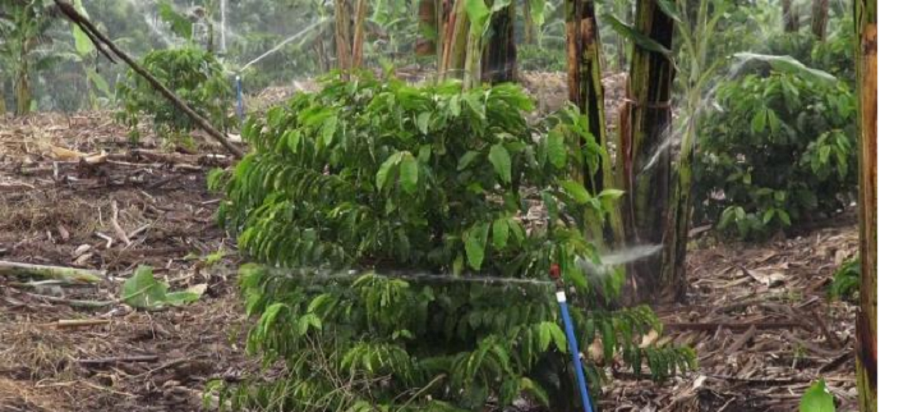Mulwana on one of his visits to the farm in Kakiri
Pumpkins (Ensujju in Luganda) are a warm season vegetable belonging to the genus “Cucurbita” class.
The gourd fruit boasts of several varieties such as sweet cream, Bala, Dulu, Onziga, Sunfish, Sugar pie and Anderina.
It does well in loamy soils with a good drainage and a high humus percentage.
The soils should not be water logged as the plant can easily rot off.
It is advisable that you grow your pumpkins from seeds and they should take about 5 days from sowing to emerge.
Planting
Pirate Mulwana, a saxophonist, an electrical engineer and social media marketer is into pumpkin farming. He started with one and half acre in Kakiri, about 30km from Kampala. He says it’s best to plant your pumpkins on moulds, though even a flat surface can work.
“Plant seeds 1 inch deep at a rate of 4 to 5 seeds per hill and 5 to 6 ft between hills,” Mulwana says, adding: “When seedlings are well established, thine each hill to leave at most 2 plants per hill.”
It’s also good to space 4ft between hills and 8 ft between rows.
Experts advise pruning vines early in the season to discourage random growth and out of control patches.
Keep pumpkin plants free of weeds by hoeing and shallow cultivation. Irrigate your plantings if there happens to be extended dry periods.
Watch out for powdery mildew which causes a dusty white mould on the plant, cucumber beetles as these mainly attack seedlings and the vines at their tender age.
Mulwana says pumpkins take about 90 to 120 days for a given pumpkin variety to reach maturity.
This is partly why he (Mulwana) chose pumpkin growing. It does not delay in the field. For instance, Mulwana started growing pumpkins in March 2021. In fact, he planted his first seed on March 18, 2021. But as of now, he is looking for market. Pumpkins are ready for harvest.
The other reason he chose pumpkin was that it has a long shelf life after harvest.
Mulwana says pumpkins can go up to 6 or even 8 weeks without going bad. During this time, you could still be ‘playing’ around with the market prices.
Pumpkins are hand harvested at their mature stage. Multiple harvests are so common because individual fruits are pollinated at different times.
Harvest your pumpkin fruits whenever you see their deep solid color i.e. most colors vary between orange and green, and when the rind is also hard.
Mulwana has so far invested about Shs2 million in the project. Asked about how much he expect to earn, he says he not sure given it is his first time but he says before he went into pumpkin growing, he read online articles and watched YouTube videos. These revealed that an acre of well-looked after pumpkin can fetch up to Shs13 million.

He employs two permanent workers – farm manager (he stays on the farm) and another who does spraying and now acts as an askari. He rents the land at Shs400, 000 per year. He says this is expensive given it’s in an urban setting. In the coming season, he plans to go to Luweero to do a bigger project, using returns from the current project.
Market
Mulwana starts harvesting tomorrow. He however says market is a bit limited due to lockdown but says he is going to use his social media following to get market.
Mulwana says Nakasero, Owino, Banda and Nakawa markets among others are also potential buyers of his pumpkins.
There are also other options such as road side stalls, and even at the supermarket vegetable shelves, hotels and restaurants.

In terms of prices, Mulwana says it keeps changing depending on demand but on average, he says one can sell a pumpkin at Shs 4, 000.
Mulwana’s plan is to continue selling locally although he has a target for the Kenyan market.
Challenges
Mulwana’s only challenge for now is that he stays a bit far from his garden which is located in Kakiri, Wakiso district.
“I have to head there every week to personally supervise,” he says.
But, he adds, “I know it will be worth it.”
Advice
Mulwana says farming is the way to go.
“As they normally say, Enkumbi telimba, farming is the way to go because at the end of the day, pandemic or no pandemic, people have to eat food,” he says but he can’t say the same thing about office jobs.
Even when he (Mulwana) is self-employed, he realized that he had to create alternative sources of income.
This is when he did research and settled for pumpkin.
He says, so far, it’s a good venture. Like any other crop, it needs good care.
Mulwana says he does a lot of spraying and mulching.
“Well. I am self-employed. I play the saxophone and also do social media marketing. So, I have enough time on my hands to do the supervision,” he says.
Mulwana says pumpkin growing does not need a lot of capital to start. So, he says, he would recommend pumpkin growing.
“It’s a project that doesn’t need so much in relation to startup capital. So, I would genuinely advise them to go into pumpkin growing but they have to be serious with it in relation to supervision,” he says.
He advises the young people to consider venturing into farming.
Future
Looking into the future, Mulwana says he will have grown to take another step into value addition.
Mulwana says pumpkin flour is where he is going next.
Tips
- Open up the land you are going to use for planting.
- Clear up the land and heap up soils to make ridges.
- At a spacing of 4ft between hills and 8 ft set up hills in an arrow.
- On the crest on the ridge open up a hole 1 inch deep, then sow seeds at a rate of 4 to 5 seeds.
- Cover the seeds gently with soil and lightly water.
- After about 10 days, the seeds will have established so go ahead to prune.
- Weed your pumpkins to prevent competition for growth nutrients.
- Often you should spray the pumpkins with pesticides and fungicides to keep off pests and diseases.
- After 120 days you can harvest your pumpkins for the table.





